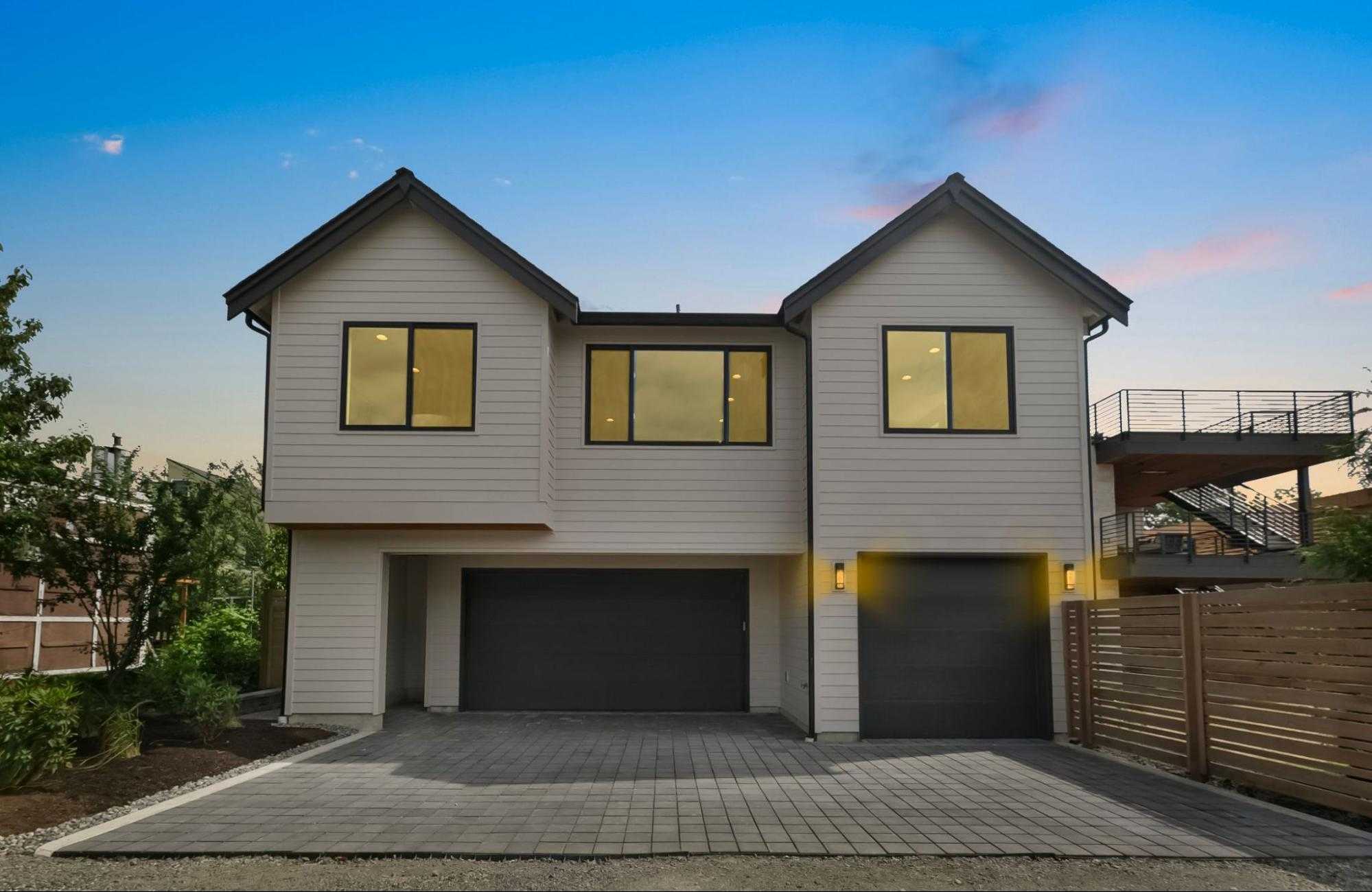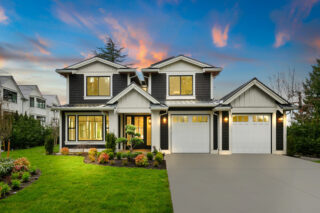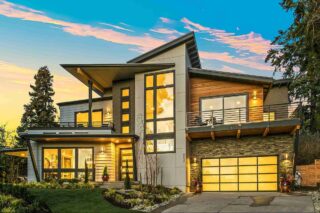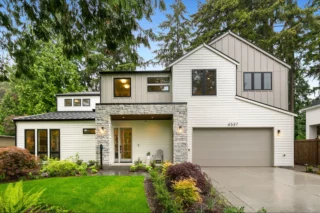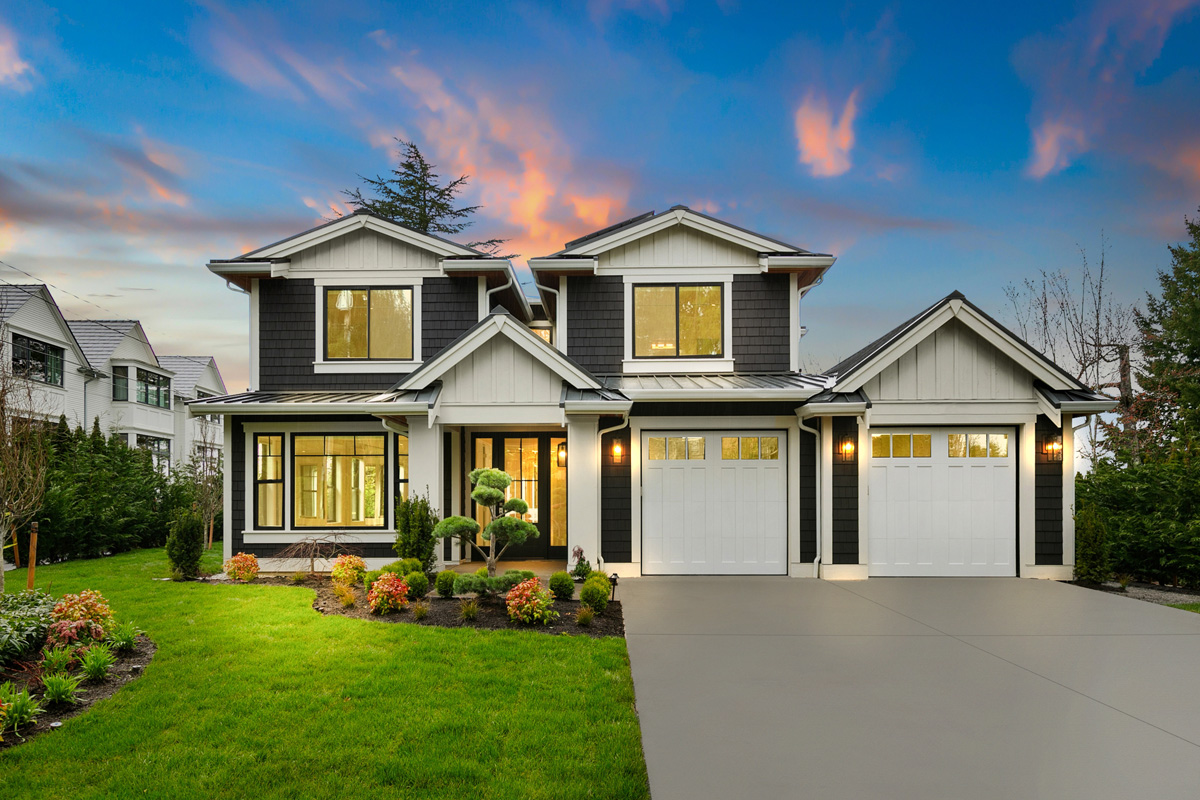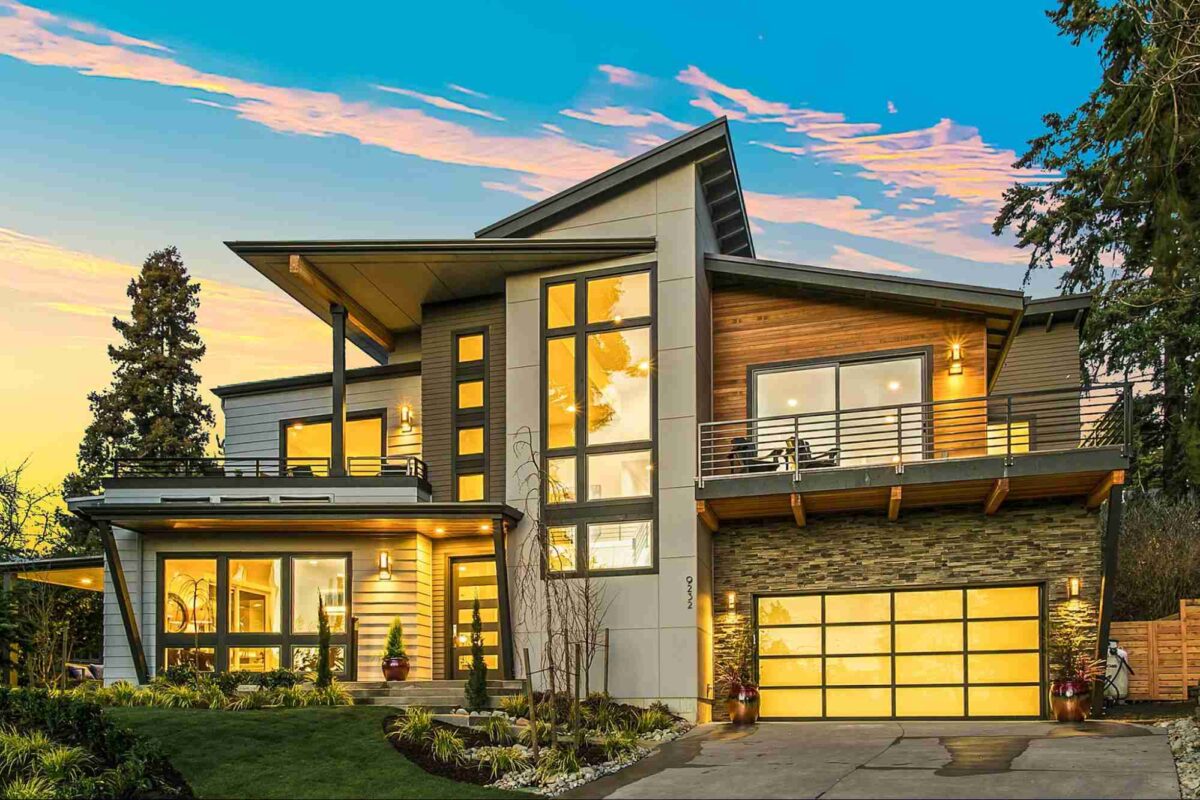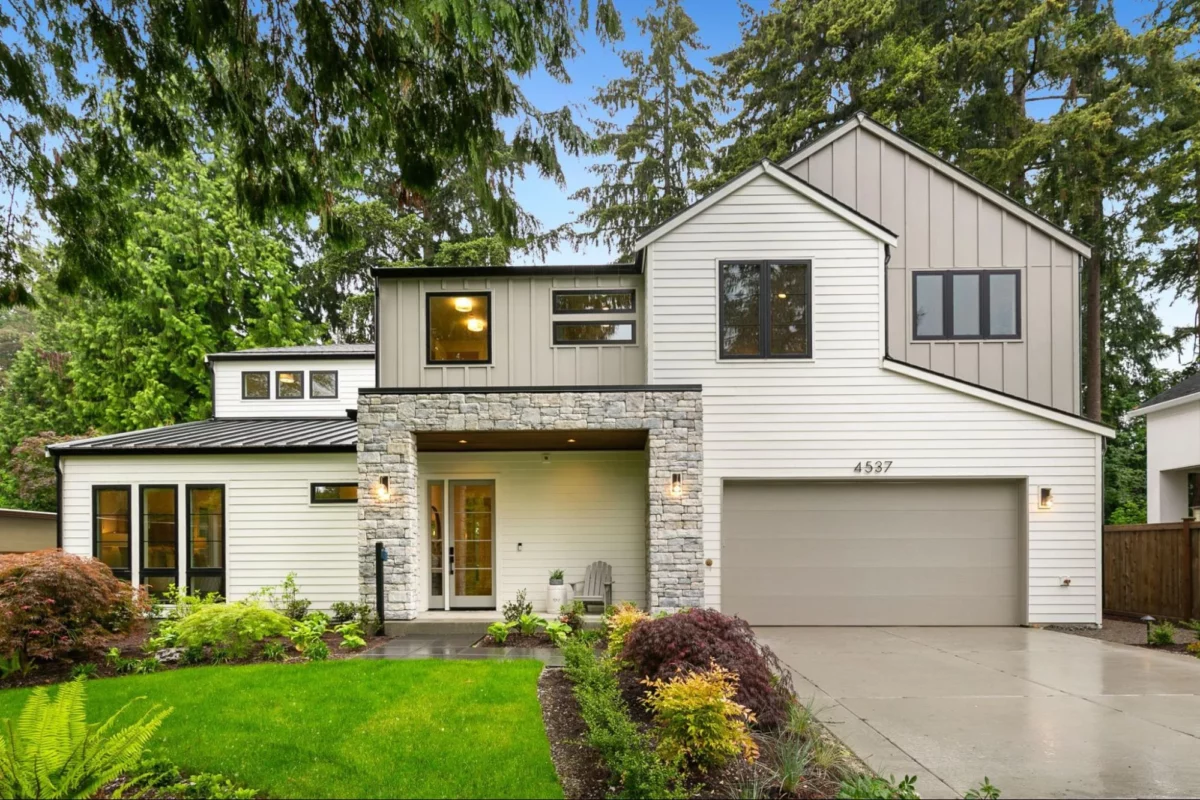Accessory Dwelling Units, or ADUs, are independent living spaces situated on the same property as an existing single-family residence. Commonly referred to as in-law suites or granny homes, getting approval to build an ADU in Washington State is now easier than ever thanks to changes in Washington housing laws made in 2024.
“The number of new ADUs is rising sharply in Washington. In the Seattle area alone, ADU permits increased by 250% between 2019 and 2022. The state is in a growth period and ADUs are a way to meet the increased demand for housing.”
– Olivia Horine, Interior Designer, JayMarc Homes
For homeowners, ADUs are useful for generating additional income or creating a private space for loved ones. For communities and municipalities, they are an effective solution to address housing shortages, prevent urban sprawl, and promote more sustainable land use.
In this blog, we’ll discuss what ADUs are, why they’re seeing an increase in popularity in Washington State, what some new rules are regarding ADUs and explore their pros and cons.
What are Accessory Dwelling Units?
Accessory Dwelling Units are smaller, independent living spaces located on the same property as a single-family home. These units can be detached structures, converted garages, or even a section of the main house designed for separate living. ADUs offer flexibility for homeowners, providing additional space for family or rental income.
ADUs come in various forms, including:
- Detached ADU: A standalone structure separate from the main house.
- Attached ADU: Built as an extension or conversion of the main home.
- Garage conversion: A renovated garage turned into a livable unit.
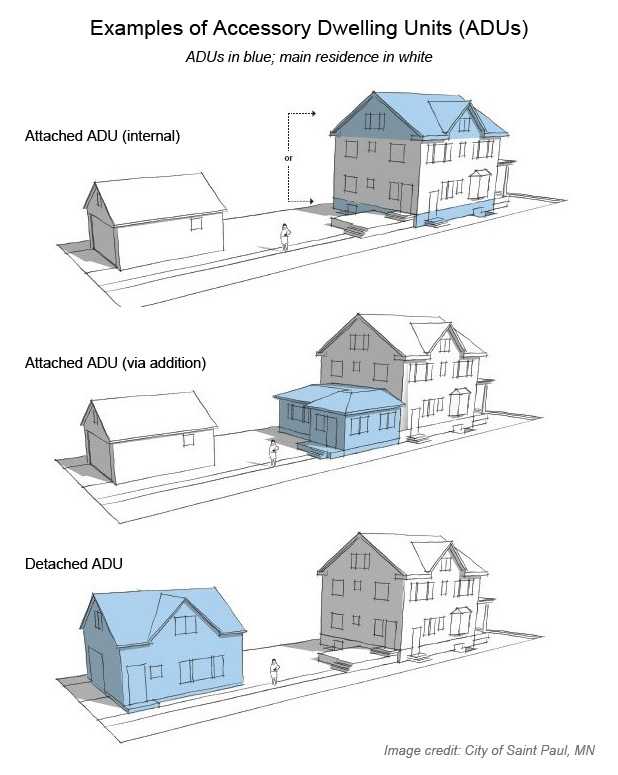
Why Are ADU Numbers in Washington State Increasing?
As mentioned earlier, ADU permits in Seattle increased sharply between 2019 and 2022. By March 2023, builders were constructing more ADUs than new single-family homes. This trend is driven by two key factors: the growing demand for housing and the recent relaxation of ADU rules, making it easier to build ADUs on both existing and new single-family properties.
The Washington Housing Crunch
More than 8 million people call Washington State home and the population is expected to continue increasing in the coming years. However, there simply aren’t enough homes to accommodate everyone.
A recent study by the Building Industry Association of Washington (BIAW) revealed that Washington “needs at least 251,894 new housing units to meet demand for housing.”
ADUs are helping to address this housing shortage by making better use of existing properties. They allow homeowners to add living space without needing to wait for large developments to be built.
Additionally, ADUs can provide more affordable housing options while giving homeowners the chance to earn extra income or create space for family members. As the demand for housing grows, ADUs are becoming an important part of the solution in Washington State.
ADU-Positive Policies
Recent policy changes brought forth with HB 1337 in June 2023 are making it easier for homeowners to build ADUs. Local governments are adhering to the new policies and are relaxing zoning laws, parking requirements, and speeding up ADU approval processes. This is making ADU projects more accessible than ever.
These ADU-friendly policies aim to encourage property owners to add more housing options, which helps ease the state’s housing shortage and affordable housing crisis. By simplifying the rules, Washington is fostering a more flexible approach to meeting housing needs, making ADUs a popular choice for many homeowners.
New ADU Rules in Washington State: Key Points to Know
The new Washington State ADU laws apply to all jurisdictions experiencing urban growth, as outlined by the Growth Management Act (GMA), which serves to ensure growth is managed appropriately.
The following key points are not a comprehensive list of the new laws, to review them in full, we suggest beginning with this guideline.
Minimum Number of ADUs Per Lot
Every lot in a GMA urban growth area must allow at least two ADUs in addition to the primary residence. Homeowners can build either attached, detached, or a combination of both types of ADUs. Additionally, converting existing structures, such as garages, into ADUs must be permitted.
| Do I have to have two ADUs when building a new home? No, a residential home is not required to include an ADU. The laws regarding ADUs in Washington State simply make it possible for 2 ADUs to exist on a property, but it’s not a requirement. |
Maximum ADU Size
How big can an ADU be in Washington state? Local governments cannot set ADU size limit maximums lower than 1,000 square feet. This allows homeowners to build larger, more practical ADUs that can serve as functional living spaces for family members or renters.
Relaxed Dimensional Standards
ADUs must follow the same dimensional standards as the principal home. This means local governments cannot impose more restrictive setback requirements, yard coverage limits, tree retention mandates, or door location restrictions than those required for the main house.
Street Improvements Not Required
Local governments can no longer require homeowners to make street improvements, such as road widening or adding sidewalks, as a condition for permitting ADUs. This change significantly reduces the cost and complexity of ADU construction.
Owner-Occupancy Requirements Removed
One of the biggest barriers to ADU construction was the owner-occupancy requirement. Under the new rules, local governments cannot require the property owner to live on-site. This provides more flexibility for renting both the primary residence and the ADU.
Condominium Sales
Local governments cannot prohibit the sale of an ADU as a condominium unit. This means homeowners can sell an ADU separately from the main house, offering more flexibility for homeowners and potential buyers.
Design Review Restrictions
Local governments cannot impose stricter aesthetic or design standards for ADUs than those required for the main house. This makes the design approval process simpler and more predictable for homeowners and developers.
Build an ADU into Your Custom Home Journey!Book a new home consultation and explore your options.Get Started |
Reduced Parking Requirements
ADU projects within half a mile of major transit stops are exempt from on-site parking requirements. For other areas, there are limitations on how much parking local governments can require, especially for smaller lots.
Impact Fees Capped
The impact fees charged for ADUs must now be capped at 50% of the fees assessed for the primary residence. This lowers the overall cost of building an ADU and encourages more homeowners to consider this option.
Common Interest Communities
New subdivisions or homeowner associations (Common Interest Communities) can no longer adopt rules (often called covenants, conditions, and restrictions or CC&Rs) that prohibit the construction of ADUs on any lot. However, existing CC&Rs remain in effect and are not impacted by the new law.
Is an Accessory Dwelling Unit in Washington State Right For You? Pros and Cons to Consider
Adding an ADU to your property can be a great way to maximize space and boost property value. However, like any home improvement project, there are important factors to weigh before moving forward. Below, we outline the key pros and cons to help you decide if building an ADU in Washington State is the right choice for your needs.
Pros of Adding an ADU to Your Property
1. Flexible Living Arrangements
Whether for aging parents, adult children, or long-term guests, ADUs offer a private, independent living space while keeping family close. They’re also great for creating home offices or studio spaces.
2. Potential Rental Income
ADUs can provide an additional stream of income through short- or long-term rentals. With no owner-occupancy requirement, homeowners can rent out the ADU or the main house for extra cash flow.
3. Increased Property Value
By adding an ADU to your property, you increase the home’s overall market value. Buyers often find homes with ADUs more attractive because of the rental or extra living space potential.
| Fun fact: Homes in Seattle with an ADU often see their property values increase 15% – 20%. |
4. Cost Savings on New Construction
Building an ADU as part of new home construction can be more cost-effective than adding one later. Incorporating an ADU from the start allows for shared utility setups, foundation work, and construction timelines.
5. Sustainable and Efficient Land Use
ADUs are a great way to make the most of your property without having to expand into new areas. They provide housing solutions within existing neighborhoods, reducing the need for sprawl and helping communities grow sustainably.
Cons of Adding an ADU to Your Property
1. Upfront Construction Costs
While integrating an ADU during new home construction can save costs, the upfront expenses for building an ADU are still significant. Costs include materials, labor, permits, and any additional utility setup, which can add up quickly.
2. Space and Design Constraints
Adding an ADU to an existing home may be limited by your property’s available space. Depending on lot size, setback requirements, and design preferences, you may not have as much flexibility as you would with new construction.
3. Utility and Infrastructure Challenges
Utility connections, such as water, sewer, and electricity, can be complex and costly, especially for existing properties. Coordinating these during a new construction project can simplify the process, but it remains a key consideration.
4. Potential Impact on Privacy
Building an ADU on your property, whether attached or detached, could affect your personal privacy or outdoor space. Consider the layout and placement to ensure it meets your needs without compromising your enjoyment of the main home.
5. Ongoing Maintenance and Management
If you choose to rent your ADU, you’ll need to handle tenant management, maintenance, and repairs. This can be especially demanding for homeowners who aren’t familiar with managing rental properties.
More helpful articles by JayMarc Homes: |
6. Zoning and Neighborhood Restrictions
Although the 2024 laws have relaxed some rules, zoning laws and neighborhood restrictions still apply, especially in older neighborhoods or in areas with homeowner associations (HOAs). Be sure to review local regulations before moving forward.
Curious About a New Construction Home with an ADU?
If you’re considering building a new home in the Seattle area and want to learn how to incorporate an ADU, JayMarc Homes is here to help. We’re a luxury home builder serving the Pacific Northwest for more than a decade and we know how to make an ADU just right.
Ready to explore your options?
Contact JayMarc Homes today and start planning your custom home with the perfect ADU for you.
